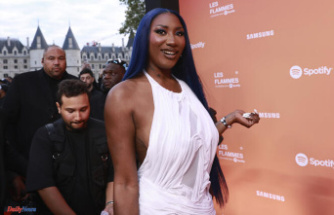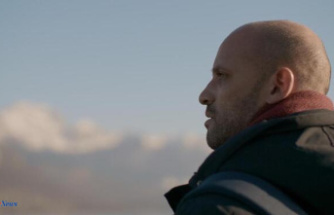The 76th edition of the Cannes Film Festival ends on Saturday May 27 with the screening of the feature film Elementary, by Peter Sohn, out of competition. After eleven days of frenzy on the Croisette, the jury, chaired by the winner of the last edition, Ruben Östlund, must award the Palme d'Or to one or one of the twenty-one filmmakers in competition.
Who will win the prestigious award? In a context where the Festival advocates parity and diversity, do the women or new faces of the official selection have a chance of winning? Without prejudging the quality of the films in the 2023 edition, we have tried to draw a composite portrait of the filmmakers who are most likely to win, based on the profiles of the winners of previous editions. The data does not take into account the years 1948, 1950, 1968 and 2020, during which the Festival did not take place or did not take place in full.
This edition stood out from previous years with an unprecedented number of female directors selected in the official competition. Of the twenty-one filmmakers, seven are women, i.e. a third of the selection. A record, even if parity is still a long way off.
The Weinstein affair, the movement
A Palme d'or awarded to a director for this 76th edition would give a little diversity to this resolutely masculine title. In the history of the Cannes Film Festival, only two women have won the Palme d'Or: Jane Campion, in 1993, for The Piano Lesson (tied with director Chen Kaige) and Julia Ducournau, in 2021, with Titane.
Of the twenty-one filmmakers likely to receive the Palme d'Or, only three are completely new to Cannes: Wang Bing (Youth), Ramata-Toulaye Sy (Banel and Adama) and Jonathan Glazer (The Zone of Interest). All the others had already presented a film in competition in the official selection or in Un certain regard of the past years. Five of them have already won the Palme d'Or.
The 2023 selection is marked by the presence of big names in cinema. Indeed, four of the filmmakers in competition appear in the top 10 directors with the most selections to their credit. Ken Loach, who is presenting The Old Oak this year, is even one of the rare filmmakers to have received the prestigious title twice (The Wind Rises in 2006 and I, Daniel Blake in 2016).
Of the twenty-one films nominated, sixteen are made by Europeans and two by Americans. With five French filmmakers in the running, French cinema has a statistically one in four chance of receiving its sixteenth Palme d'Or.
Tunisian Kaouther Ben Hania (Les Filles d'Olfa) and Senegalese Ramata-Toulaye Sy (first feature film) represent the African continent. The victory of one of these two women would allow the continent to win its second Palme d'Or, forty-eight years after that of Algerian director Mohammed Lakhdar-Hamina, for the film Chronicle of the Burning Years.
Asian cinema has two representatives, including the Japanese Hirokazu Kore-eda, director of the film Kaibutsu, already Palme d'Or in 2018 for A Family Affair, and the Chinese Wang Bing for his documentary film. Finally, on the South American side, the Brazilian director produced in the United Kingdom Karim Aïnouz was nominated for his film Le Jeu de la reine.
Since the creation of the Cannes Film Festival, the films that have received the supreme award (Grand Jury Prize until 1975, then Palme d'Or) have been mainly Western. This edition is not lacking and the Western directors of the selection have a statistical 71% chance of winning the Palme d'Or.












